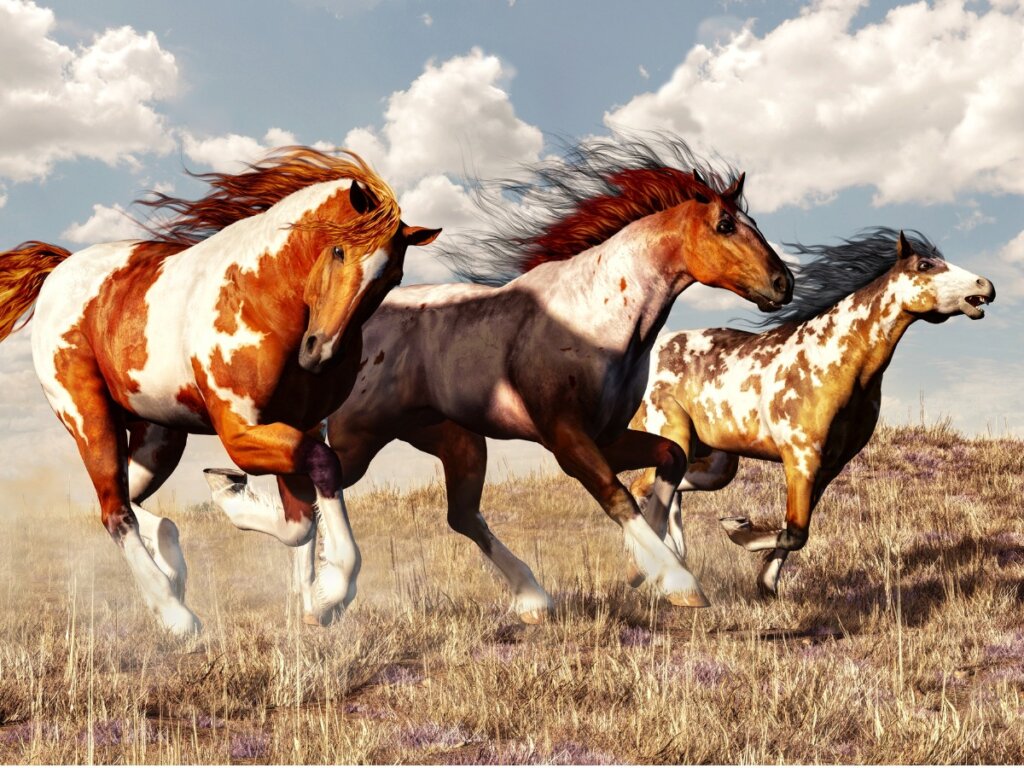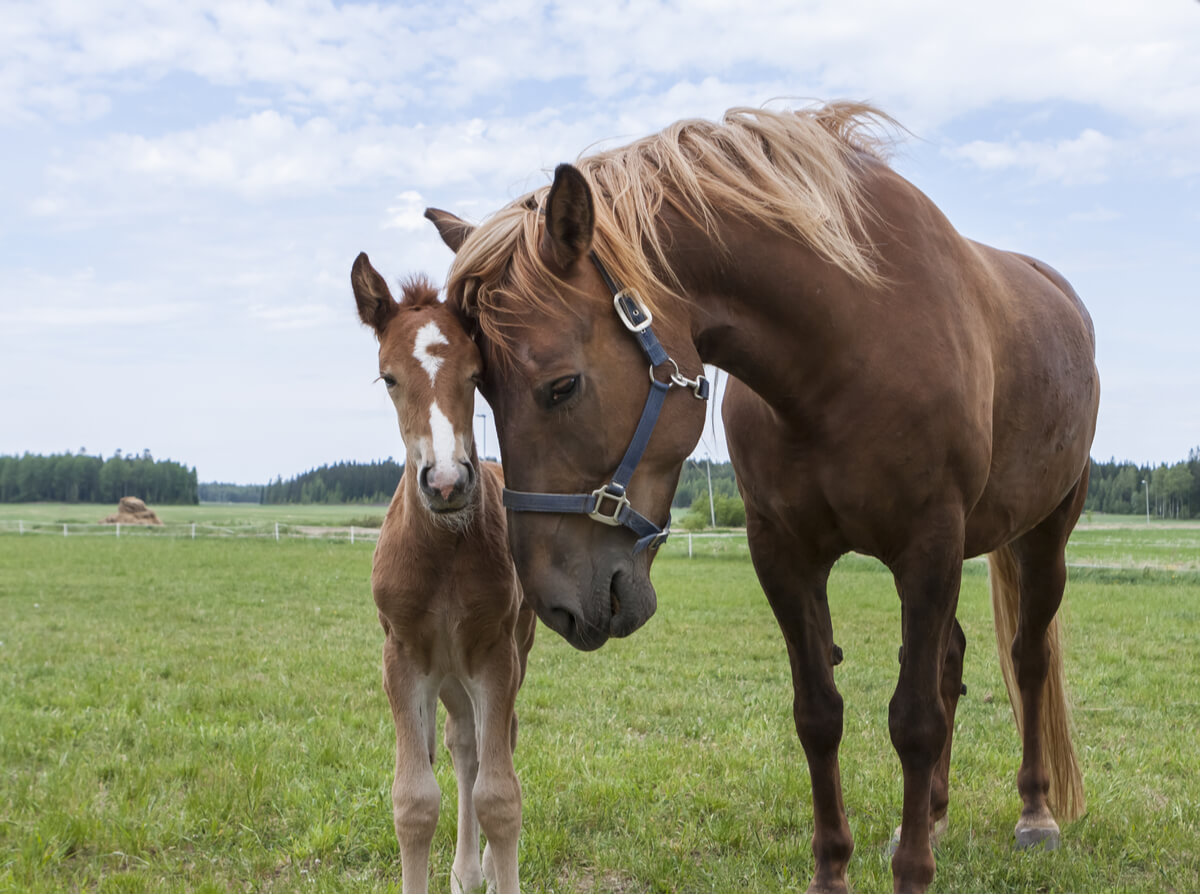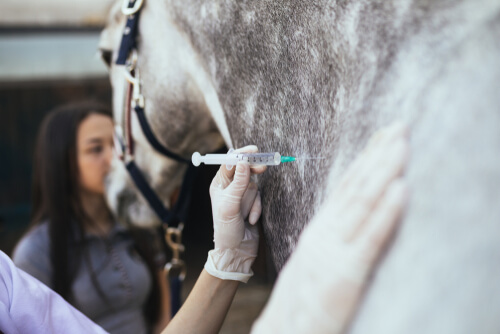West Nile Fever in Horses: Symptoms and Prevention

West Nile fever in horses is caused by a virus and is transmitted through the bite of certain mosquitoes. This disease is more common in birds, although humans and horses can also contract it. Most affected individuals will exhibit mild symptoms, but a few may develop severe and lethal symptoms.
This disease can’t be transmitted directly, as it requires an insect to act as a carrier (mosquito). Because transmission depends on this vector, cases of West Nile fever increase during the hottest months of the year. Read on to learn how this disease affects horses.
What is West Nile fever?

West Nile fever is a viral infection transmitted by mosquitoes of the genus Culex and Aedes. Wild birds are the natural hosts of the disease, although humans, horses, donkeys, and mules can be infected accidentally. In fact, any mammal is susceptible to the infection, even though most are able to fight it off without a problem.
According to the University of Iowa’s Center for Food Security & Public Health, 80% of infected humans are asymptomatic and only 1% show severe symptoms. The virus can be found almost anywhere in the world and there’s a wide variety of different strains. Cases have been reported in crocodiles and equines, as well as various wild and domestic birds.
Mechanism of transmission
West Nile fever is maintained naturally between birds and mosquitoes. This interaction occurs throughout the year and increases the number of birds infected with the disease. This creates a situation that allows the virus to survive for a long time.
The problem arises when a mosquito that’s able to feed on mammals and birds becomes infected when it comes into contact with a sick animal. Consequently, there’s a high probability that the insect will spread the disease to animals other than the natural host. Accidental infections in humans and horses occur at this time.
Symptoms of the disease
Most equines are asymptomatic. However, lethality is close to 40%, so symptoms may serve as an indication of a severe case. After the mosquito bite, warning signs appear 3 to 15 days later. Among the most frequent are the following:
- Anorexia
- Depression
- Ataxia (difficulty coordinating movements)
- Weakness when moving
- Paralysis of one or more limbs
- Teeth grinding
- Severe facial edema
- Confusion
- Convulsions
- Gait in circles
- Tremors in the facial muscle and neck
- Difficulty swallowing
- Somnolence
- Periods of hyperexcitability
In addition to the above, horses also become susceptible to secondary infections. These are the main causes of spontaneous death. In certain situations, it’s even necessary to euthanize them for humane reasons.
Who is the causative agent?
The virus that causes West Nile fever belongs to the genus Flavivirus, which is grouped within the family Flaviviridae. It’s part of the same group as dengue, Zika, yellow fever and Japanese encephalitis viruses. Most of them share the characteristic that they’re only transmitted through arthropods (the vector).
This pathogen was first isolated in the Ugandan district in 1973, but was imported to America in 1999. Outbreaks became critical and spread to more countries, resulting in the emergence of several strains. In addition, the migratory routes of birds further spread the disease.
Diagnosis
Diagnosis of infected horses begins with the analysis of symptoms. The neurological affectations cause an evident change in their behavior, and so it’s to see the presence of the virus. Even so, to complete the diagnosis it’s necessary to use clinical tests to detect the presence of the infectious process.
There are 3 main tests to identify the presence of West Nile fever in horses. Each of these is described below:
- Measurement of antibody concentration (ELISA test): the presence of immunoglobulin M (IgM) is measured. When the body goes through an infection, these molecules increase.
- Cerebrospinal fluid analysis: a count of mononuclear cells is performed. In the presence of infectious processes the amount of these cells increases.
- PCR-RT: the polymerase chain reaction allows identification of the presence of viral genetic material. This process is performed with cerebrospinal fluid samples and is the most accurate so far.
It’s also possible to attempt virus isolation through blood samples or cerebrospinal fluid. This would also confirm the diagnosis simply and directly. However, it’s usually avoided because of the biosecurity measures required to carry it out.
Treatment
Treatments consist of controlling the symptoms affecting horses. At present, there’s no specific drug that efficiently cures this disease. Analgesics, sedatives and anti-inflammatory drugs are the main drugs recommended to treat the situation.
Horses that contract West Nile fever begin to show an improvement about 7 days after the onset of symptoms. Most will recover completely, but 10-20% will exhibit sequelae such as limb weakness, loss of physical stamina, and behavioral alterations.
Preventive vaccines

Although there’s no effective treatment for West Nile fever, there are effective vaccines that reduce the number of severe cases in horses. This preventive method is based on the administration of an inactivated strain of the virus, which allows the immune system to prepare for infection.
The vaccine is administered intramuscularly and requires two doses. The interval between each injection is between 3 and 6 weeks. However, after the last application, you must wait a minimum of 6 weeks for the horse to become immune. This should be repeated on an annual basis just before the mosquito season begins.
Horses can suffer serious consequences from West Nile fever. For this reason, the best option is prevention through vaccination to avoid fatalities. Remember that preventive measures don’t only help the animals, but also reduce the possibility of the owners becoming infected.
All cited sources were thoroughly reviewed by our team to ensure their quality, reliability, currency, and validity. The bibliography of this article was considered reliable and of academic or scientific accuracy.
- American Association of Equine Practitioners (2017). WEST NILE VIRUS. Recuperado el 21 de diciembre de 2021, disponible en: https://aaep.org/sites/default/files/Documents/WestNileVirus_Final.pdf
- Durá Pérez, M. (2021). Predicción espaciotemporal de casos de fiebre del Nilo en caballos de España. Medidas de control (Bachelor’s thesis).
- Ortíz-Esquivel, J. E., Rosado-Aguilar, J. A., Rodríguez-Vivas, R. I., Torres-Castro, M., Gutiérrez-Ruiz, E. J., Bates-Acosta, A., & Puerto, F. I. (2021). Infección reciente del virus del Oeste del Nilo en caballos del oriente de Yucatán, México. Revista MVZ Córdoba, 26(3), e2165-e2165.
- Hernández, R. I., Bravo, L. L., Morón, D. M., Armas, E., Girón, B. J., & Aponte, C. D. (2009). El Virus del Nilo Occidental: Revisión. Revista del Instituto Nacional de Higiene Rafael Rangel, 40(1), 44-56.
- Ramos, C., & Lezama, J. A. F. (2004). La fiebre del Nilo Occidental: una enfermedad emergente en México. salud pública de méxico, 46(5), 488-490.
- The Center for Food Security & Public Health (2009) Fiebre del Nilo Occidental. Recuperado el 21 de diciembre de 2021, disponible en: https://www.cfsph.iastate.edu/Factsheets/es/fiebre_del_nilo_occidental.pdf
